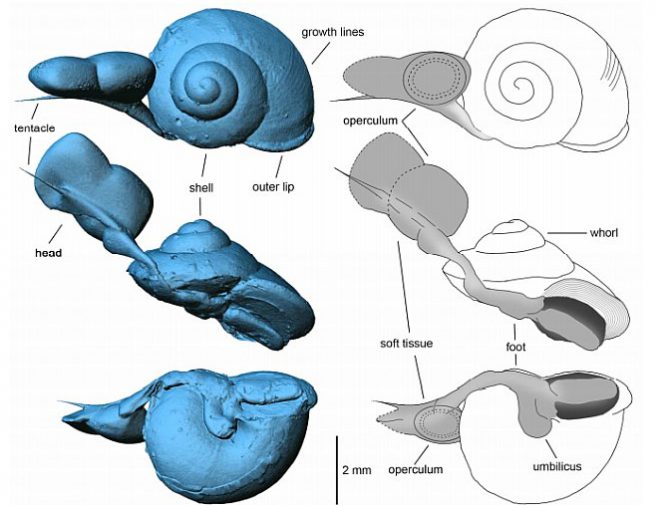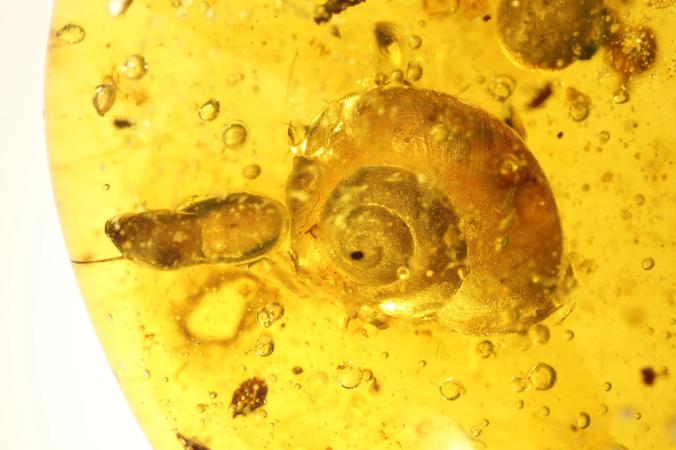There are many ways that creatures of the past can be somehow preserved as fossils for us to study. The most common way is when dead animals are buried under things like mud or sand. Though much of the body decays over time, new material fills in the spaces where the animal used to be, creating a cast, or model, of their remains.
Usually, this cast is of the animal's skeleton, which is what gives us stuff like this.
(Getty Embed)
We just want to point out that even in this case, this isn't the Triceratops' actual skeleton. Though it looks just like its bones did, the bones seen in the above photo were replaced by other materials that hardened in the exact same shape.
Why are we saying this? We just want to point out that preserving a prehistoric animal's actual body tissue—any part of it, even the hardest parts—is next to impossible. We can only really think of two ways to do it. One way is for it to be frozen. The other is having it be trapped in amber, or tree sap.
Which is how we got today's jaw-dropping specimen: a 99-million-year-old Cretaceous-era snail!
Little fella, big deal

These 3D images show the details of the fossil. Some scientists think that the snail's body was caught in this position because it was trying to escape the sap after its shell became trapped. (Lida Xing, China University of Geosciences, Beijing)
Sure, on a day-to-day basis, a snail is not an animal that generates much excitement. You're lucky if you even notice these slow, small invertebrates as they calmly wander from leaf-to-leaf in your garden.
Similarly, these animals aren't really built to withstand time. They have no bones. Their bodies are just a bunch of super soft tissue. Left in the open, the body of a snail would decay in next to no time. And even the spiral shell is pretty fragile and easily crushed.
All of which makes this fossil truly incredible. The fact that the amber preserved the shell is, of course, really cool. But this amber preserved everything; the snail's soft, squishy foot, its head, and even its super-delicate eyestalks are still intact! From 99 million years ago!
Incredible.
Made in China
This snail fossil is yet another stunning specimen that has been discovered in China over the last decade or so. Whether it's feathered wonders, pterosaur eggs, ancient turtles, baby snakes, or, uh, whatever this is ... China is hitting it out of the park in its pursuit of fantastic fossils.
And even with all of these wild fossils, this snail may be one of the best yet. That's how rare it is to find soft tissue preserved so beautifully. Who knew that 99 million years later, it would be a snail that we'd be talking about, right? Nature is full of surprises!
 This prehistoric snail is one of the most well-preserved fossils you'll ever see. (Lida Xing, China University of Geosciences, Beijing)
This prehistoric snail is one of the most well-preserved fossils you'll ever see. (Lida Xing, China University of Geosciences, Beijing)









